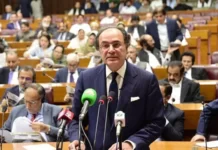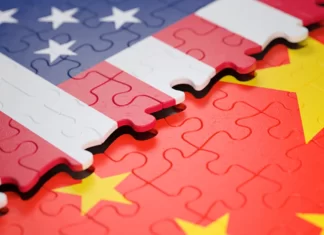Pakistan’s investment ratio has fallen to its lowest level in 50 years, reaching 13.1% of the economy in the outgoing fiscal year, according to figures approved by the National Accounts Committee (NAC).
The fixed investment-to-GDP ratio dropped 11.4% from 12.4% last year. Private sector investment declined to 8.7% of GDP, the lowest in nearly 25 years. Public sector investment fell to 2.8%, the lowest in four years, due to fiscal constraints and incomplete budget allocations.
This drop reflects the challenges faced by the Special Investment Facilitation Council (SIFC) in attracting investment without addressing fundamental economic issues and achieving political stability.
The data also revealed a discrepancy in the population figure used by the Pakistan Bureau of Statistics (PBS). The official per capita income was overstated at $1,674, based on an outdated population figure of 236 million instead of the 2023 census figure of 241.5 million.
Provisional National Accounts estimates indicate that investments and savings as a percentage of Pakistan’s economy have remained below official targets. The investment-to-GDP ratio fell short of the 15.1% target, dropping to 13.1%, the lowest since the fiscal year 1973-74 when it was 13.2%.
The current 13.1% investment-to-GDP ratio remains below regional peers, down from 14.1% last year.
Pakistan expected up to $5 billion in investment from Saudi Arabia during the ongoing fiscal year, but these assurances have not materialised into concrete agreements.
The International Monetary Fund (IMF), during recent talks, inquired about expected investments for this fiscal year and the next.
While the SIFC has improved coordination among federal and provincial governments and addressed procedural issues, its efforts have not significantly increased foreign or domestic investment.
On the flip side, frequent changes in taxation policies and biases towards the manufacturing sector have further reduced investment in the manufacturing sector. The country’s productivity is declining, and economic growth is largely driven by consumption, which accounts for about 88% of the economy’s growth.
The failure to meet the investment target of 15.1% of GDP has limited the government’s ability to address infrastructure and social sector issues, increasing reliance on loans for development projects.
The savings-to-GDP ratio slightly decreased from 13.1% to 13%, falling short of the official target.
The estimated size of the national economy for the current fiscal year is $373.6 billion, up from $338.2 billion last year, reflecting a 10.5% increase in dollar terms due to a stable exchange rate. However, this is still below the $375.6 billion size two years ago, which decreased due to devaluations.
























